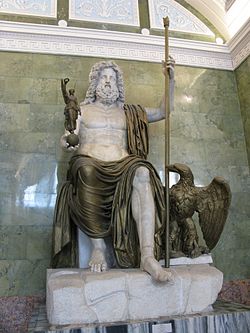At this moment in time there are 8 planets in our solar system. There was 9 until Pluto was downgraded to a dwarf planet as it did not fit the criteria of a planet. Neptune is a giant ball of hydrogen and helium. It has little water and when the temperature lowers, ice forms. Uranus has a strange ring which travels vertically around the planet instead of horizontally. Scientists believe that Uranus may have been hit by a meteorite and knocked sideways. Saturn is distinguishable by its unique ring which is made up of ice crystals. It is the second largest planet and is mostly made up of poisonous gases. Jupiter is the largest planet and has a giant red spot which is a raging storm. mars is the closest planet to Earth and scientists believe it may have once supported life. Earth is the planet we live on which is made up of 70% water and 30% land. Venus is a toxic wasteland. The temperatures on Venus can exceed 400°C as it is the second planet from the sun. Mercury is the smallest, hottest and closest planet to the sun. Because Mercury has no atmosphere the temperature ranges from over 400°C to -200°C.
|  |
  | In ancient Roman religion, Jupiter: The god of war, is the king of the gods and the god of sky and thunder. Jupiter is usually thought to have originated as a sky god. His identifying implement is the thunderbolt, and his sacred animal is the eagle,which became one of the most common symbols of the Roman army. The Romans thought of Jupiter as the equivalent of to the Greek God, Zeus. In the Greek tradition, Jupiter was the brother of Neptune and Pluto. Each watched over one of the three realms of the universe: sky, the waters, and the underworld. Jupiter is the fifth planet from the sun and is the largest planet. It is so big that it could fit 1000 earth's into it! One year on Jupiter lasts 4332.6 earth days. It weighs 19 septillion kilograms which is very heavy. Its path which orbits the Sun is 778 330 000 thousand kilometres. The average temperature in the day is -121°C and at night is-163°C. It has sixteen major moons and a lot more smaller ones. The atmosphere is made up of 89.8% hydrogen and 10.2% helium. It has a tilt of at 3.13°. |
Unlike Saturn’s complex rings Jupiter has an inner, middle, and outer ring. Jupiter’s ring and moons exist within an intense magnetic field. One of the major moons named Europa may support extraterrestrial life beneath its icy outer layer. It has a metallic core encased by rock which is then surrounded by an ocean. Jupiter rotates very fast and one day on Jupiter lasts only 9 hours and 55 minutes. This gas giant is big enough to fit all of the other planets inside it. Jupiter has a raging storm which has lasted for over 500 years with winds up to one thousand kilometres an hour this storm is big enough to fit over two Earth's inside it. Jupiter is so far away from the sun but is not the coldest planet. Scientists believe that Jupiter may have an internal heat source.